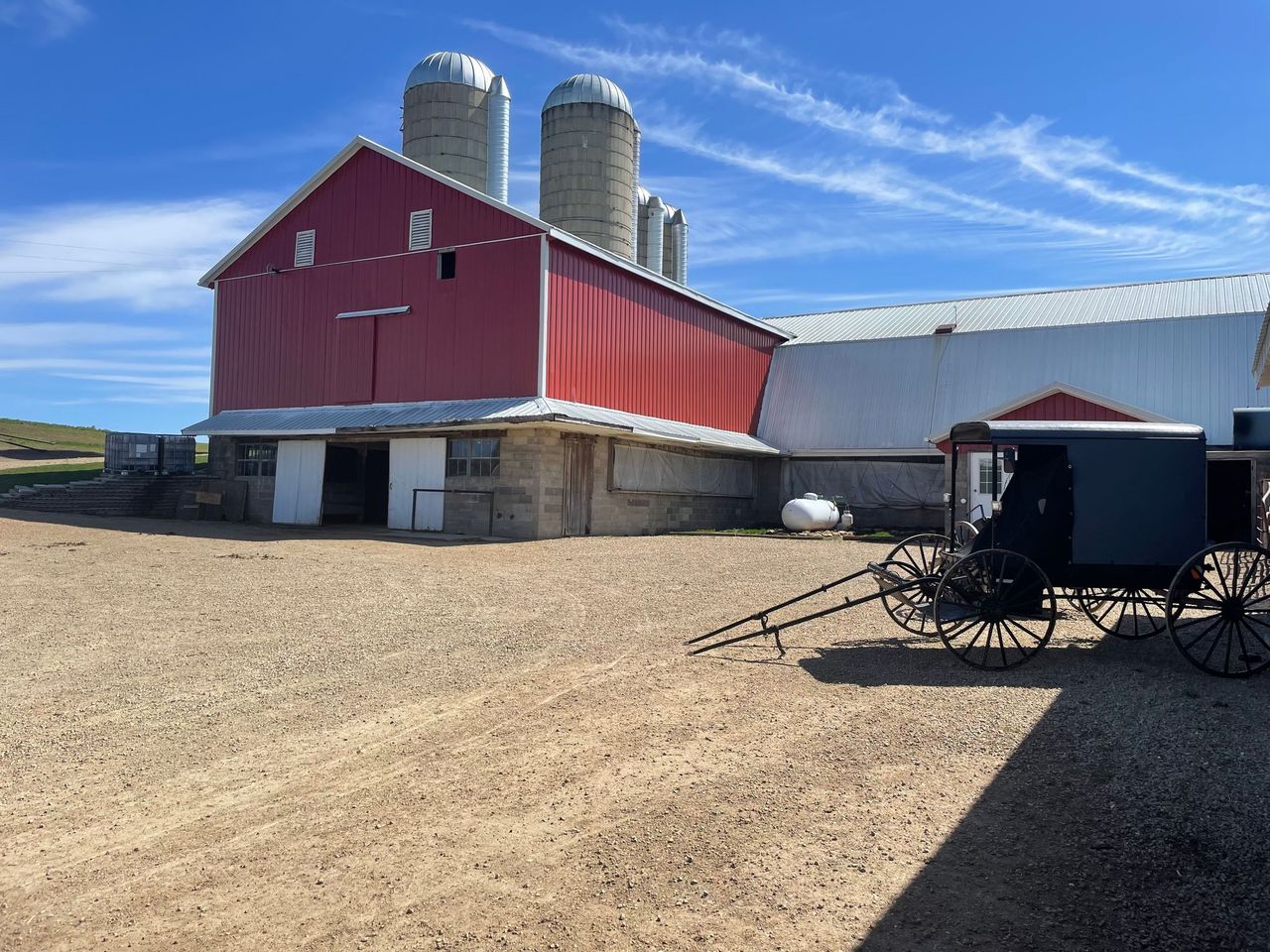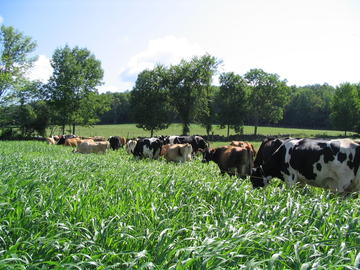Resilient Cover
This farm is in the part of Wisconsin where the rolling hills of the beautiful Driftless Region give way to the flat open plains that are typical in Illinois and Iowa. All the cultivating and harvesting on this farm is done with draft horses, and the farmer is changing his crop rotations to help his farm be more resilient as the climate gets more variable.

When the same crop is planted in the same place every year, the soil can become depleted of nutrients. To address this problem, over the millennia farmers have developed location specific crop rotations that improve nutrient levels and soil structure and increase organic matter.
After a series of dry summers, this farmer started to grow sorghum sudangrass in his crop rotations. Sorghum and sudangrass are tropical plants that like warmer weather. They are planted later than corn and can grow even in dry weather. In the upper Midwest, farmers are planting hybrids that combine sorghum and sudangrass – sorghum sudangrass – to ensure that forages are available in organic production systems in the typically hot and dry months of late July and August, or in drought conditions.

Sorghum sudangrass can be used as chopped or baled silage for feeding cows later, or it can be managed grazed to provide feed and encourage regrowth. As the climate gets more variable and rainfall less predictable, sorghum sudangrass is becoming a more popular part of dairy farmer crop rotations. It also has regenerative farming benefits when used in a crop rotation after legumes, or as a cover crop, that include adding organic matter to the soil, smothering weeds, adding nematode populations, and penetrating compacted soil.
For more about the regenerative benefits of sorghum sudangrass, see:
https://cropsandsoils.extension.wisc.edu/articles/sorghums-sudangrass-and-sorghum-sudan-hybrids
A note about our photos: We are excited to use photos to connect you to the farms that supply milk for your Organic Squeaks so you can learn about the wide range of eco-active practices they use. Unless noted otherwise, these photos were taken on this farm by a photographer who is also one of our farmers. We respect the culture and privacy preferences of our farm partners, which is why you won’t always see people in our photos.

